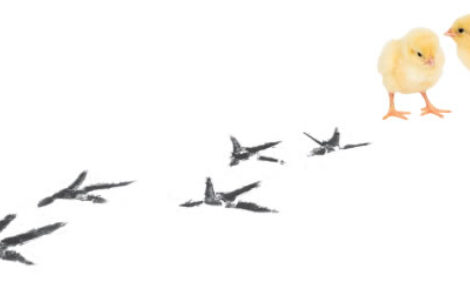



Farming in focus: Rabobank's Justin Sherrard
Speaking with The Poultry Site in early 2019, Rabobank's Justin Sherrard reflected on the global poultry industry in 2018 and made some predictions for the current year.Has the US-China trade climate had any impact on poultry trade, either between the two nations or globally?
No material impact on poultry trade has been registered to date, owing to the ban on poultry imports China imposed due to avian influenza, so there isn’t any poultry trade between the US and China to be impacted.
This could change, however, since the two countries are exploring options for an increase in agricultural exports from the US to China. Two areas of opportunity come to mind.
First, the US export of chicken to China. China is currently experiencing record prices for certain cuts of poultry meat as a result of the African Swine Fever outbreaks and a general shift away from pork in some foodservice channels (eg group dining). Margins for the US poultry industry are also under pressure, so additional export opportunities would be most welcome.
Second, US exports of breeding stock to China. One reason China’s white-feathered broiler production has been declining is that breeding stock in the industry has been limited since the aforementioned trade ban. Increasing exports of breeding stock from the US could lead to welcome productivity growth in China’s poultry industry.

In terms of global poultry trade, which country was most affected in 2018 and why?
Brazil was most affected by changes in global trade in 2018, for a number of reasons.
First, the EU de-listed Brazilian plants from trade due to concerns over the integrity of the food safety inspection system, which affected breast meat exports. This presented particular problems for the industry in Brazil because breast meat trade is limited, so alternative markets are not easy to find.
China also launched an anti-dumping investigation into Brazil in mid-2018, which created another area of uncertainty around poultry exports. Moreover, changes in halal standards in Saudi Arabia, another major export market for Brazil, have also challenged Brazil’s export poultry exports. Production and exports were also significantly affected by the trucker’s strike in May.
Despite these challenges Brazil’s export performance in 2018 has been remarkably strong – based on the first 10 months of 2018, exports were down seven percent.
What trends and world issues will have the greatest impact on the poultry industry in 2019?
Four issues stand out as driving change in the global poultry industry in 2019:
Biosecurity issues
Avian Influenza remains an issue for the global industry. It requires ongoing investment to strengthen biosecurity measures, and has the potential to distort trade flows. In addition, the severity of the African Swine Fever outbreak in China means all proteins will see enhanced demand in trade markets, with upside movement of prices.
Trade
The US-China trade war may be enjoying a temporary truce right now, but we expect disruptions in trade to continue through the course of 2019 as we move into a new era of US-China relations.
While this is the highest profile trade issue, there are many other trade dynamics in play as we move into 2019, including the new Comprehensive and Progressive Trans-Pacific Trade Partnership, which will see some countries advantaged in their access to Japan, for example, and the gradual normalisation of trade relationships within North America. But it is ongoing use of non-tariff barriers that will continue to complicate trade flows, reflecting a shift to protectionism in many parts of the world.
Regional changes in feed prices
Some regions are expecting to see higher, while others will see stable or even lower feed prices in 2019. This diversion in feed prices could lead to new opportunities and threats in poultry trade flows.
The tightening of the cycle in the US
With new capacity coming on-stream in 2019, production will continue expanding in 2019. This is already putting poultry margins under pressure, and we expect to see more pressure on margins in the US in 2019. This could spill over into trade – with the US more aggressive in export markets, for example.
How have US politics affected global poultry trade?
First, the US is looking for new export destinations, as it is expanding production ahead of demand. Second, some traditional importers are looking to diversity their supply base, in response to uncertainties over their future trade relationships with the US. Mexico is the stand-out example, as it has looked to Brazil and Chile as alternative suppliers during 2018
Globally, which countries are making the best progress on animal welfare improvements?
There are two ways of answering this question. Where are animal welfare standards highest? In Europe, and within Europe, countries like the UK have high standards that are being imposed by food retailers and foodservice companies. Also, where are standards likely to see the biggest changes? Probably in the US, following recent regulatory changes in California which legislates that egg production must be cage-free by 2022.
What innovations which have already been released or which are due to be released do you anticipate will improve the industry the most?
Innovation designed to improve animal welfare outcomes, and to demonstrate these improvements along the supply chain, have the greatest potential for growth in 2019, as well as automation in processing to address labour availability challenges in many markets.
How was 2018 for avian influenza?
2018 was a relatively mild year, with few significant AI outbreaks. This should give the industry confidence that its ability to manage AI threats is improving, but at the same time should not be seen as an opportunity to reduce investment in this area
What predictions can you make regarding the influence of Brexit on poultry?
The first part of this question is about what type of Brexit we are most likely to see in 2019, and the second part is about the implications of that on the poultry industry.
I write as we approach the end of 2018, and see a no Brexit, a soft Brexit and a hard Brexit as three possible outcomes. A smooth process is not part of any of these potential outcomes, so whatever outcome we have, business should plan for uncertainty around trade access (tariffs and non-tariff barriers) and the value of Sterling. For companies in the UK, planning for uncertainty around consumer confidence (demand) and labour availability is also important.
Only a hard Brexit outcome is expected to create lasting changes in trade flows, but even under this scenario, in 2019 it is unlikely that any company/country other than those working to EU standards will be able to export to the UK, given the animal welfare standards imposed by the food retail and foodservice industry in the UK.









